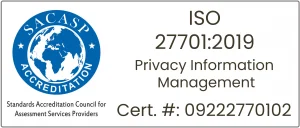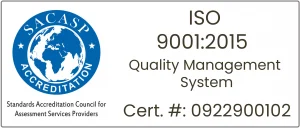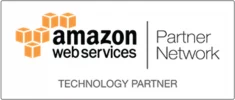Financial institutions face significant challenges in meeting regulatory requirements, particularly when responding to unexpected calls for data submission from FSCS. These calls to submit FSCS SCV reporting can be time-consuming and resource-intensive but are crucial for maintaining regulatory compliance.
One of the main challenges is the short timeframe required to submit FSCS SCV report, often only 24 hours. This can be difficult if the data is unavailable or if there are errors. Also, the complexity of regulatory reporting requirements, which can change frequently, also complicates the process.
Most notably, compiling and submitting the data needed for FSCS SCV regulatory reporting can be challenging since it is often dispersed across several systems. Therefore, financial institutions need a robust data management strategy to respond swiftly and accurately to these calls and comply with regulations.
The Importance of Data Management for Regulatory Compliance
Data management is critical to financial organisations’ regulatory compliance. This is especially true for timely and accurate FSCS SCV reporting. SCV reports providing a comprehensive snapshot of a customer’s financial condition across all its products and services such as savings, deposit, mortgages and more a financial institution delivers. This information is critical for regulators to monitor the financial viability of financial institutions and protect consumers, in case of FI’s failure.
Failure to adhere to regulatory reporting requirements could result in significant consequences. This includes:
- Regulators can sanction FIs that fail to report appropriately.
- As FI’s PRA status reflects its financial health, failing to meet regulatory reporting responsibilities can downgrade FI’s PRA status from green to amber or red.
- Noncompliance with regulatory reporting obligations might ruin a FI’s reputation, making it challenging for the FI to acquire and sustain clients and investors.
- Disregarding the legal reporting obligations causes investors and customers to distrust it, leading to a drop in sales and profitability.
Importance of Data Quality in Internal Risk Management and Decision Making
- Data quality is critical for internal risk management and decision-making in financial institutions. Accurate and comprehensive data is required to detect and assess risks, devise risk mitigation methods, and make informed choices.
- Data management can help FIs meet regulatory requirements, manage risks, and make smart business decisions.
Key Factors for FIs to Ensure Data Quality in FSCS SCV Reporting
The FSCS SCV reporting requires meticulous data quality to avoid compliance breaches and preserve a positive regulatory status. To maintain data integrity and meet the strict standards of FSCS SCV reporting, FIs must prioritise the following critical considerations:
1. Robust Data Governance Framework
- Clear Ownership and Accountability: Create a well-defined data governance system that allocates clear responsibility and accountability for data quality to specific individuals or teams within the organisation.
- Data Stewardship: Appoint data administrators to monitor the quality, integrity, and use of certain datasets within their area.
- Policies and Procedures: Establish detailed data governance procedures and standards that define guidelines for data collection, retention, use, and security.
2. Data Quality Standard and Procedures
- Define Quality Metrics: Establish certain data quality metrics, such as accuracy, consistency, completeness, and speed, to assess data asset quality.
- Data Cleansing: Use automated data cleansing techniques to find and fix errors, inconsistencies, and duplication in the dataset.
- Data Standardisation: Use standard data formats, terms, and codes for ensuring data consistency.
3. Data Lineage and Audit Trails
- Track the Data Journey: Keep thorough documentation of data origin, transformations, and consumption to track the data’s progress and identify any issues with it.
- Audit Trails: Conduct audit trails for tracking data access, changes, and modifications, thereby ensuring a transparent record for compliance checks.
4. Data Validation and Reconciliation
- Validation: Run regular data validation checks automatically to ensure that data is accurate and consistent with set rules and standards.
- Reconciliation: Conduct reconciliations between diverse data sources to find discrepancies and assure data accuracy.
5. Data Security and Protection
- Controlled Access: Implement rigorous security measures to limit access to sensitive data to only authorised personnel.
- Encryption: To safeguard sensitive data from security breach and disclosure, encryption is recommended.
- Regular Security Assessments: Perform periodic security assessments like VAPT testing to discover and correct flaws in data security procedures.
6. Data Quality Monitoring and Enhancement
- Constant Monitoring: Use tools for evaluating data quality indicators to detect potential issues.
- Measures to Improve Data Quality: Prioritise data quality enhancement initiatives to resolve identified shortcomings while maintaining high data quality requirements.
By following these essential principles, financial institutions can considerably improve data quality, reduce the risks related with erroneous data, and assure compliance with FSCS SCV reporting requirements.
Technology Adaptations for Effective Regulatory Reporting
Centralised Data Management Platforms
- This platform stores all important customer data, including customer name, date of birth, phone number, account details, balances, and transaction history.
- FIs can acquire a complete view of their client base by aggregating data using APIs to integrate with external core banking systems or external data sources, such as legacy platforms or Excel-based data, enabling more accurate SCV reporting and decreasing the risk of inconsistency.
AI Algorithms & Automation of Data Cleansing, Validation, and Reporting
- FIs can automate significant tasks like data cleansing, validation, and SCV report preparation using AI algorithms.
- Employing AI algorithms generates SCV report by analysing datasets to pinpoint inaccuracies in customer and account holder information, account segregations, data duplication, and additional issues, thus minimising risk through the eradication of inaccuracies in data reporting.
- For example, automatic data cleansing systems can detect and fix errors in client data, ensuring that the reports are valid.
- Furthermore, AI-powered automated reporting solutions can generate reports in the requisite formats, lowering the likelihood of manual errors and delays.
Data Analytics for Trend Identification and Proactive Compliance
- FIs can uncover patterns and anomalies that may suggest compliance difficulties by analysing historical data.
- This proactive approach enables them to resolve issues before they get worse, lowering the risk of penalties and harm to their reputation.
Cloud Data Storage and Reporting Solutions
- They offer scalability and flexibility, allowing financial institutions to absorb expanding data volumes without making substantial infrastructure investments.
- Additionally, cloud-based FSCS SCV reporting solutions can expedite data submission, ensuring timely and accurate report delivery.
Specialised Regulatory Reporting Software
- Specialised regulatory reporting software can be a great tool for financial institutions that need a customised solution for FSCS SCV reporting.
- These software solutions are intended to automate many of the steps required with SCV reporting, such as data collection, validation, and submission.
- FIs can save time and effort by utilising specialised software to meet regulatory requirements.
Best Practices for FIs For Data Readiness
Implement an Integrated and Comprehensive Approach
- Establish a unified approach to recognise the implications for the business operating model and assess the quantitative benefits in terms of data governance.
- This includes seeking independent validation, utilising robust application platforms for data insights, and developing a data governance strategy and implementation.
Streamline Regulatory Reporting Processes
- Enhance the existing regulatory reporting process by standardising it and improving the quality of the data.
- This involves moving away from manual, error-prone reporting methods to automated solutions with strong auditing capabilities to remediate data redundancy and duplication.
Focus on Data Governance
- Prioritise data governance and structured data management to address challenges related to massive volumes of unstructured data.
- The focus should be on accurate data derivation, data unification, and maintaining high-quality data standards.
Enhance Data Quality
- Develop frameworks for data onboarding, data transformation, and data validation to ensure consistent, accurate, and complete data.
- To enhance data quality and lower reporting flaws, implement data cleansing, data enrichment, and data deduplication logic.
Data Governance Maturity Model
- Employ a framework of maturity for better data governance by incorporating standardised definitions, data architecture, warehousing, master data management, and data validation processes.
Integrate Compliance with Overall Risk Management
- Ensure alignment between compliance activities and the overall risk management governance.
- Develop clear roles and responsibilities, coordinate risk assessment methodologies, and establish governance processes to integrate compliance effectively with other risk and support functions.
Continuous Improvement
- Emphasise continuous improvement in data governance practices by measuring progress against desired outcomes.
- Monitor data architecture, data warehousing, master data management, and data validation processes to ensure ongoing enhancement and data consistency.
By adopting these best practices, financial institutions can enhance their readiness for unexpected regulatory calls and improve their overall regulatory compliance processes.
Conclusion
In the face of evolving regulatory requirements and the potential for unexpected compliance challenges, financial institutions must equip themselves with robust tools and strategies. To effectively navigate these complexities,
Macro Global’s SCV Enterprise Solution Suite stands out as a comprehensive solution designed to enhance regulatory preparedness and streamline compliance processes.
The SCV Enterprise Suite consists of two powerful components: SCV Forza and SCV Alliance.
SCV Forza
- An automation platform that enables financial institutions to efficiently generate Single Customer View (SCV) reports with high accuracy, dramatically reducing the time and effort involved in compliance tasks.
- This platform ensures that the data used for regulatory reporting is not only timely but also trustworthy.
SCV Alliance
- Serves as an audit platform that provides comprehensive oversight of data quality and compliance.
- This component incorporates 175 well-defined audit checkpoints to monitor potential risks while allowing institutions to validate data against multiple external sources.
- With its proactive approach to compliance, SCV Alliance empowers banks and financial institutions to remain ahead of regulatory changes and ensure their reporting obligations are met effectively.
Together, the SCV Enterprise Solution Suite positions financial institutions to tackle unforeseen regulatory calls with confidence. By automating and enhancing data management practices such as data integration, validation, and reporting, FIs can maintain the integrity of their Single Customer View and ensure seamless regulatory compliance even in unpredictable situations. As the regulatory landscape continues to evolve, leveraging Macro Global’s innovative solutions can make all the difference in sustaining operational resilience and regulatory adherence.
Talk to our regulatory consultants and prepare ahead for unexpected FSCS SCV reporting calls
Book a Free Consultation
Talk to our regulatory consultants for answering unexpected FSCS SCV reporting calls
Book a Free Consultation
Related Posts
Key Strategies and Best Practices for UK Insurance Firms to excel in FSCS SCV Compliance
Understand how efficient FSCS SCV reporting can be as a strategic advantage for UK insurance firms, improving compliance and operational efficiency.
Best Practices & Strategies Guide for Asset Management & Investment Firms Generate FSCS SCV Reports
Learn how asset management firms can effectively manage their FSCS compliance obligations through robust SCV reporting strategies.
Navigating the Future of Digital Wallets Amid Big Tech Challenges
Discover how Digital Wallets are transforming payments, the challenges they face, and what the future holds for secure digital transactions.



















